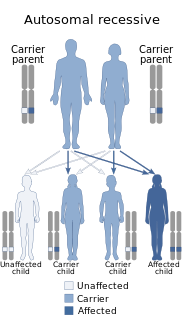
CD14 is a human protein made mostly by macrophages as part of the innate immune system. It helps to detect bacteria in the body by binding lipopolysaccharide (LPS), a pathogen-associated molecular pattern (PAMP).

Myeloid differentiation primary response 88 (MYD88) is a protein that, in humans, is encoded by the MYD88 gene.

Lipopolysaccharide binding protein (LPB) is a protein that in humans is encoded by the LBP gene.

Lymphocyte antigen 96, also known as "Myeloid Differentiation factor 2 (MD-2)," is a protein that in humans is encoded by the LY96 gene.

Non-receptor tyrosine-protein kinase TYK2 is an enzyme that in humans is encoded by the TYK2 gene.

Cytoplasmic tyrosine-protein kinase BMX is an enzyme that in humans is encoded by the BMX gene.

Calcium/calmodulin-dependent protein kinase type II delta chain is an enzyme that in humans is encoded by the CAMK2D gene.

Serine/threonine-protein kinase MRCK alpha is an enzyme that in humans is encoded by the CDC42BPA gene.

Cyclin-dependent kinases regulatory subunit 2 is a protein that in humans is encoded by the CKS2 gene.

MAGUK p55 subfamily member 6 is a protein that in humans is encoded by the MPP6 gene.

Dual specificity protein phosphatase CDC14A is an enzyme that in humans is encoded by the CDC14A gene.

Metastasis suppressor protein 1 is a protein that in humans is encoded by the MTSS1 gene. True to its name, it codes for a metastasis suppressor.

Serine/threonine-protein kinase PCTAIRE-3 is an enzyme that in humans is encoded by the PCTK3 gene.

Serine/threonine-protein kinase 10 is an enzyme that in humans is encoded by the STK10 gene.

Protein phosphatase Slingshot homolog 2 is an enzyme that in humans is encoded by the SSH2 gene.

Phosphorylase b kinase regulatory subunit alpha, skeletal muscle isoform is an enzyme that in humans is encoded by the PHKA1 gene. It is the muscle isoform of Phosphorylase kinase (PhK).

Acyloxyacyl hydrolase, also known as AOAH, is a protein which in humans is encoded by the AOAH gene.

Ubiquitin-like protein 5 is a protein that in humans is encoded by the UBL5 gene.

Protein pellino homolog 2 is a protein that in humans is encoded by the PELI2 gene.

LRBA deficiency is a rare genetic disorder of the immune system. This disorder is caused by a mutation in the gene LRBA. LRBA stands for “lipopolysaccharide (LPS)-responsive and beige-like anchor protein”. This condition is characterized by autoimmunity, lymphoproliferation, and immune deficiency. It was first described by Gabriela Lopez-Herrera from University College London in 2012. Investigators in the laboratory of Dr. Michael Lenardo at National Institute of Allergy and Infectious Diseases, the National Institutes of Health and Dr. Michael Jordan at Cincinnati Children’s Hospital Medical Center later described this condition and therapy in 2015.
























